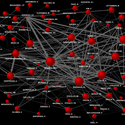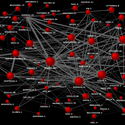Ranking scientists
Most metrics of a scientist’s impact in a field, like the h-index, rely primarily on the number of times his or her papers have been cited, and can miss the more subtle ways that knowledge and credit for this research spread among scientists. Now, in a paper appearing in Physical Review E, Filippo Radicchi and Santo Fortunato at the Institute for Scientific Interchange in Torino, Italy, and Benjamin Markines and Alessandro Vespignani at Indiana University in the US are instead proposing a way to rank scientists that reflects the diffusion of scientific credit in time. Their method, based on an algorithm similar to Google’s PageRank, takes into account several nontrivial effects such as the fact that being cited by an important author has more influence than being cited by one who is less well known.
By analyzing a set of about 400,000 papers published between 1893 and 2006 in the Physical Review, Radicchi et al. establish a ranking according to their “Science Author Rank Algorithm.” They show that the probability of winning a physics prize is consistently higher for authors who have top positions, according to their algorithm, than for other popular metrics. Moreover, the top positions in their ranking are not necessarily held by those scientists who have garnered the greatest number of citations.
Assessing scientists and their merit has, nowadays, become a crucial task for many policy makers. Radicchi et al.’s paper reminds us that a scientist’s merit and scientific impact cannot always be encoded in a single number, but results from a complex process of interactions between the members of the scientific community. In this respect, this paper is a beautiful first step towards a credible alternative quantitative ranking of scientists’ work. – Marc Barthelemy





